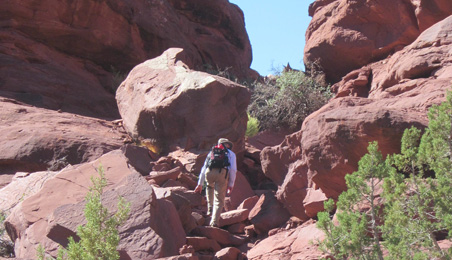Neuroscientist Finds Correct Parkinson’s Diagnosis and Treatment at Mount Sinai
After years of experiencing movement-related problems, Professor John Hopfield finally received an accurate Parkinson's disease diagnosis at Mount Sinai
In 2010, Professor John Hopfield began noticing a number of small and seemingly unrelated symptoms that were affecting his ability to do the most basic everyday tasks such as eating, sleeping, shaving, and working on his computer. All the things he normally took for granted were becoming chores.
 Professor Hopfield had spent decades building his career as a neuroscientist of international reputation, doing groundbreaking work at Bell Laboratories, the California Institute of Technology, and, most recently, Princeton University. He has received numerous awards, including the Albert Einstein World Award of Science, and he was a MacArthur Fellow.
Professor Hopfield had spent decades building his career as a neuroscientist of international reputation, doing groundbreaking work at Bell Laboratories, the California Institute of Technology, and, most recently, Princeton University. He has received numerous awards, including the Albert Einstein World Award of Science, and he was a MacArthur Fellow.
Professor Hopfield had reached his 70s and was consulting neurologists for peripheral neuropathy (numbness, tingling) in his feet. That was about the time he began noticing a constellation of movement-related problems. He wondered if these symptoms were related, and, if so, what did it mean for him and his future.
Still Without a Clear Explanation for His Symptoms, Professor Hopfield Seeks Out Mount Sinai Neurologist for Help
He mentioned these symptoms to his primary care physician, but was given no satisfactory explanation. Professor Hopfield decided to take the next step and consult a neurologist who might be able to provide an accurate and speedy diagnosis. A friend recommended the Robert and John M. Bendheim Parkinson and Movement Disorders Center at Mount Sinai and, specifically, neurologist Catherine Cho, MD.
Before visiting Dr. Cho early in 2013, Professor Hopfield jotted down these notes describing what he was experiencing:
- Handwriting getting smaller; writing becoming a slower and slower chore
- My computer mouse manipulation ability with right hand diminished and extreme tiredness in my right forearm after a hard day
- Small tremor in right hand when eating
- Having to think about motor acts that formerly were spontaneous – how to easily get out of the bathtub or a deep automobile seat; cutting meat on my dinner plate; how to roll over in bed without waking my wife
- Dressing and eating now take much longer than they formerly did; buttons and zippers the primary cause of delay
- Shaving is very slow requiring considerable thought
- Right-hand motions require thought, much less automatic than they formerly were
- When walking, I must constantly remind myself not to lean forward
To Professor Hopfield and most of us, these symptoms seemed diverse and erratic and possibly related to stress, hard work, or simply the passing of time. But to Dr. Cho, the symptoms fitted a pattern and that pattern had a name: Parkinson's disease.
Thanks to Mount Sinai, Professor Hopfield's Parkinson's Disease Is Manageable, Allowing Him to Keep Up His Active Lifestyle
In those notes Professor Hopfield jotted to himself prior to coming to Mount Sinai, he also wrote:
From assessment and consultation, I hope to learn how to deal with my seemingly diverse complaints, whether by drugs, systematic physio/exercise, and/or accepting them and adapting to them as the untreatable consequence of aging in my neuromuscular system. Of course, if they were unified by a named and treatable syndrome, that would be helpful.
Dr. Cho not only provided Professor Hopfield with the right diagnosis of Parkinson's disease, but thanks to medications, exercise, and his continuing positive attitude, he is not only adapting, but thriving. He continues to see Dr. Cho twice each year for an examination and monitoring of his Parkinson's disease symptoms and medications. Professor Hopfield is pleased to report, “I can now touch-type with both hands, walk five miles without resting, cross-country ski, sleep without pain, eat more easily, and enjoy social events that require standing and talking.”
And, perhaps more importantly, by September 2013, Professor Hopfield was hiking in the National Parks in Utah.